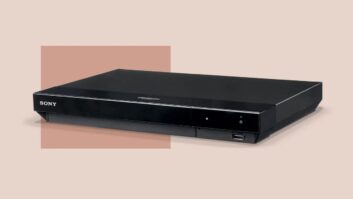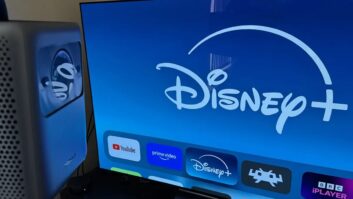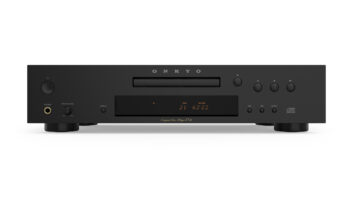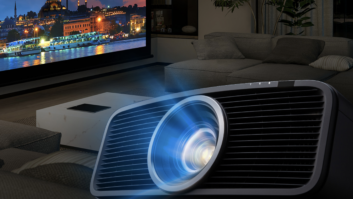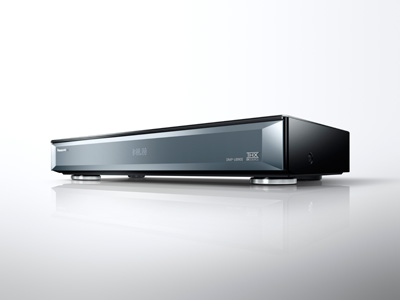
Panasonic is going decidedly up-market with the planned September launch of its first 4K Ultra HD Blu-ray player, which features UltraHD Premium and THX certification.
The DMP-UB900 plays back high-resolution audio formats, including DSD; it also incorporates 4K streaming services, and a variety of proprietary audio- and video-processing technologies to enhance audio and video playback.
It will initially be available in September at a suggested $699 exclusively through 400 Best Buy Magnolia locations and on Panasonic’s web store. Then it will be rolled out to high-end A/V specialists of the type that sell upscale Technics-brand audio equipment, said Barry Murray, Panasonic’s A/V marketing group director in Canada.
“We see this as an early-adopter market right now, so we’re going with a premium product first,” he explained. The premium position also reflects “a new approach to the market as a premium supplier as we reposition after leaving the TV market [in the U.S.],” he said.
The company is looking at a 4K player line expansion but not during this calendar year, he noted.
The price tag is significantly higher than the $399-suggested prices of the Samsung and Philips 4K players, the only two players available to date.
Panasonic has no plans for a major national ad campaign because of the product’s premium position. Instead the company will work closely with retailers to promote the product.
To get THX certification, the player met hundreds of performance parameters set by THX to deliver optimum performance, Panasonic said.
For the Ultra HD Association’s Ultra HD Premium designation, the player meets performance metrics for resolution, high dynamic range (HDR), peak luminance, black levels, and DCI P3 wide color gamut, among other things.
The Ultra HD Association’s requirements are very similar to the specifications developed by the Blu-ray Disc Association (BDA) for 4K player hardware, said one Ultra HD Association (UHDA) member. The Ultra HD Association wanted to extend its certification to player hardware from displays, 4K discs, and 4K content services in order to simplify its message to consumers and salespeople, the member explained.
Video performance: To enhance picture quality, Panasonic collaborated with Panasonic Hollywood Laboratory to deliver proprietary 4K chroma processing for clear and natural HDR reproduction, edge adaptive chroma processing for sharper edges, and improved 4K chroma up-sampling of 1080p sources, the company said.
Although HDR to SDR conversion is mandated in the 4K Blu-ray spec, Panasonic is going a step farther with conversion technology that maximizes other 4K disc performance attributes on any TV display, including FullHD displays. The player passes through the original 4K signal to a display that incorporates 18Gbps HDMI with HDCP 2.2 copy protection, but the player optimizes a 4K disc’s output for playback on older 4K displays using slower 10.2Gbps HDMI 2.0, said Murray. The player will also convert 4K content to FullHD for playback on FullHD displays with HDMI 1.4 copy protection.
Consumers with 1080p displays will achieve better picture quality from a 4K disc than from the 1080p disc sold as part of a combo pack because of the 4K disc’s better picture quality, Murrays said.
As for Panasonic’s HDR-to-SDR conversion technology, the company said its technology delivers more details in black areas, brighter highlights, and smoother flesh tones than competing players’ HDR conversion technologies. The player also offers user-adjustable dynamic range controls unavailable on other players.
Audio performance: In targeting audiophiles, the player features playback of high-resolution audio files in the 192/24 FLAC, ALAC and WAV formats as well as in the 2.8MHz and 5.6MHz formats from USB- and LAN-connected formats and from discs. It also supports 5.1-channel 192/24 FLAC. The company wasn’t sure if it would add the high-resolution MQA decoder.
Also for audiophiles, the player features 7.1-channel analog outputs and five 192kHz/32-bit DACs. One DAC is for dedicated two-channel playback, and a second is for the three front channels during multichannel playback. Both are high signal-to-noise DACs with low-jitter technology. Among the other three DACs, one is dedicated to the two surround channels, one for surround-back channels, and one for a subwoofer.
Proprietary Remaster technology up-samples two- and multichannel audio to 192/32 resolution to improve low- and mid-frequency response, extend audible frequencies out to 96kHz, and widen the soundfield of a two-channel source, the company said. Remaster works on Blu-ray soundtracks when played through the player’s PCM output as well as on USB- and LAN-connected sources.
Digital Tube processing, which simulates the warm sound of tube-amplifier circuitry, features six settings to let users select the audio characteristics of different types and brands of amplifier tubes.
Also to enhance sound quality, users will be able to switch off circuitry that could inject noise into the audio signal. Consumers will be able to turn off the front-panel FL display, video processing circuits, and circuitry driving any unused outputs such as the HDMI or digital-audio outputs.
On its digital ins and outs, including the wired LAN input, the company also used circuitry to prevent noise from entering. Panasonic also used a high-performance power supply and high-performance audio parts to enhance audio performance.
Other features: The player also offers Wi-Fi, DLNA, playback of 3D 1080p Blu-ray discs, CD and DVD playback, and mandated Open HDR playback but not optional Dolby Vision HDR playback. Supported 4K streaming services are Netflix and YouTube, though Netflix HDR isn’t currently supported.
It lacks SACD and DVD-Audio disc playback and lacks hard drive to support the 4K Blu-ray spec’s optional Copy and Export feature.
Dual HDMI outputs consist of one HDMI 2.0a output and one HDMI 1.4 output, the latter to deliver audio to A/V receivers that lack HDMI 2.0 inputs with HDCP 2.2 copy protection.




